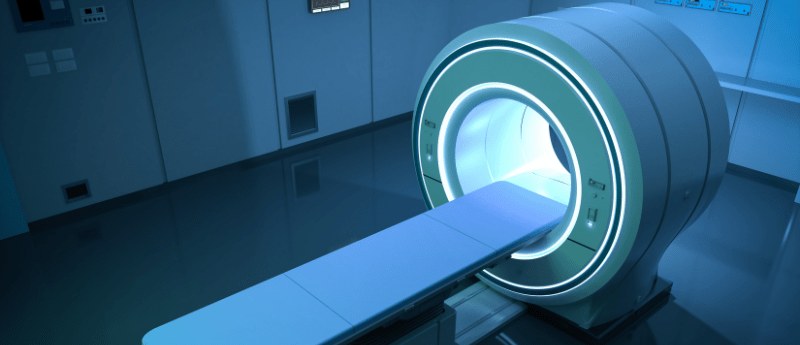Could imaging after just 1 week predict advanced melanoma treatment response?

 A recent study has uncovered that imaging the tumors of patients with advanced melanoma receiving Keytruda® (pembrolizumab) after only 1 week, rather than the standard of approximately 3 months, identified metabolic changes that corresponded with treatment response and progression-free survival (PFS). In this interview, Senior Editor Jade Parker, speaks with the lead author of the study Michael Farwell (University of Pennsylvania, PA, USA) about how imaging at 1 week could improve treatment outcomes and the next steps for this innovative trial.
A recent study has uncovered that imaging the tumors of patients with advanced melanoma receiving Keytruda® (pembrolizumab) after only 1 week, rather than the standard of approximately 3 months, identified metabolic changes that corresponded with treatment response and progression-free survival (PFS). In this interview, Senior Editor Jade Parker, speaks with the lead author of the study Michael Farwell (University of Pennsylvania, PA, USA) about how imaging at 1 week could improve treatment outcomes and the next steps for this innovative trial.
The study focused on imaging patients after just 1 week of initiating pembrolizumab, compared to traditional 3-month monitoring. What led you to explore this early time point?
Our neoadjuvant trial showed that patients were having complete pathologic responses to immunotherapy by 3 weeks, meaning that the tumor was completely gone. This was a surprising result, which told me that if we wanted to capture the peak immune response, when tumors were infiltrated by activated immune cells but not yet completely cleared by the immune system – then we would need to look earlier. That is why we focused on imaging at 1 week in this trial, with the hope that we might capture the peak immune response at that time. But we didn’t know what we were going to find. So, we were really excited when we saw that there were dramatic changes in 18F-fluorodeoxyglucose FDG activity at these early time points – both large increases and large decreases, which meant that the response to immunotherapy was happening very quickly.
How does imaging at 1 week address challenges associated with later imaging intervals?
Imaging at 1 week has several advantages compared to imaging at later time points:
- It provides data on what is happening in tumors at a time point that is close to the peak immune response, in which we see these large increases and large decreases in FDG activity, instead of looking later on when the immune response is largely finished. This not only informs patient care but also has the potential to help us better understand immunotherapy response and tumor biology. For example, it was very interesting to see how the kinetics of response varied both between patients and also between different lesions in the same patient, and we have a lot to learn about what these differences in kinetics mean.
- Imaging at 1 week provides very little time for nonresponding tumors to grow, which makes for a much cleaner analysis. At later time points growing tumors typically have increased FDG activity, which can confound the analysis.
- Imaging at 1 week provides an earlier response assessment so patients can potentially change treatment earlier or have more time for additional companion studies (blood tests or additional imaging studies) to inform their response status.
Could you discuss the key findings regarding metabolic flare (MF) and metabolic response (MR) observed in the study, and how these were correlated with treatment response and overall survival?
We found that any large changes in FDG activity (either a metabolic flare or metabolic response) within tumors at 1 week predicted response to immunotherapy. It was exciting to see that these large metabolic changes were only seen in responding patients, so this “MF-MR group” had an objective response rate of 100%. Thus, we were able to identify responding patients with very high confidence. This approach also identified a cohort of patients with stable metabolism which was enriched in nonresponding patients, but more work will need to be done to more accurately identify all of the non-responding patients – either with companion blood tests or additional imaging studies. I will note that we were largely expecting to see increases in FDG activity due to infiltration of activated immune cells and were surprised to see such large metabolic responses (with decreased FDG activity) at 1 week – since this implies that the immune response is happening very quickly.
Also, biomarkers of response to immunotherapy need to not just predict response – they need to be correlated with survival. So it was exciting to see that there was a correlation between these large metabolic changes and survival.
Pulmonary metastatic melanoma: current state of diagnostic imaging and treatments
This review article looks into the current clinical modalities with a focus on diagnostic imaging and therapeutics for pulmonary metastatic melanoma.
What steps are needed for validation of this approach and how would you like to see it integrated into routine clinical practice?
We first need to validate this approach in a larger cohort, and plan to also include combination immunotherapies, which are commonly used in clinical practice. We are also planning on evaluating this approach in patients with NSCLC treated with immunotherapy, and it has the potential to be applied across other cancers and immunotherapy regimens, including cellular therapy.
Since this approach uses FDG PET/CT scans, which are widely available, and we are measuring changes in SUVmax, which are routinely reported in clinical reads, we expect that this approach could be readily applied to routine clinical practice to assess early response to immunotherapy. Responding patients could de-escalate therapy, for example in the neoadjuvant setting by avoiding surgery, and nonresponding patients could change to a different therapy. Although our confidence in identifying non-responders is lower, we would still have the potential to start patients on monotherapy and escalate patients with stable metabolism (which are enriched in non-responders) to combination therapy. But I am confident that we will develop the tools to identify nonresponding patients with much greater confidence in the future, which will enable more options for treatment changes.
Interviewee profile:
Dr. Michael Farwell is an Associate Professor of Radiology at the University of Pennsylvania. He received his MD from Columbia University, is board-certified in Diagnostic Radiology and Nuclear Medicine, and he holds a master’s degree in Organic Chemistry from Harvard University. Farwell’s research focuses on oncologic applications of molecular imaging, with an emphasis on developing new imaging tools for the rapidly growing field of cancer immunotherapy. He is particularly interested in the development of new methods for imaging the immune response to cancer immunotherapy and tracking cellular therapies via PET. Farwell is co-Chair of the ECOG-ACRIN Immuno-Oncology Working Group and he is the Imaging Chair of the ECOG-ACRIN Melanoma Committee.
The opinions expressed in this article are those of the author and do not necessarily reflect the views of Oncology Central or Taylor & Francis Group.
